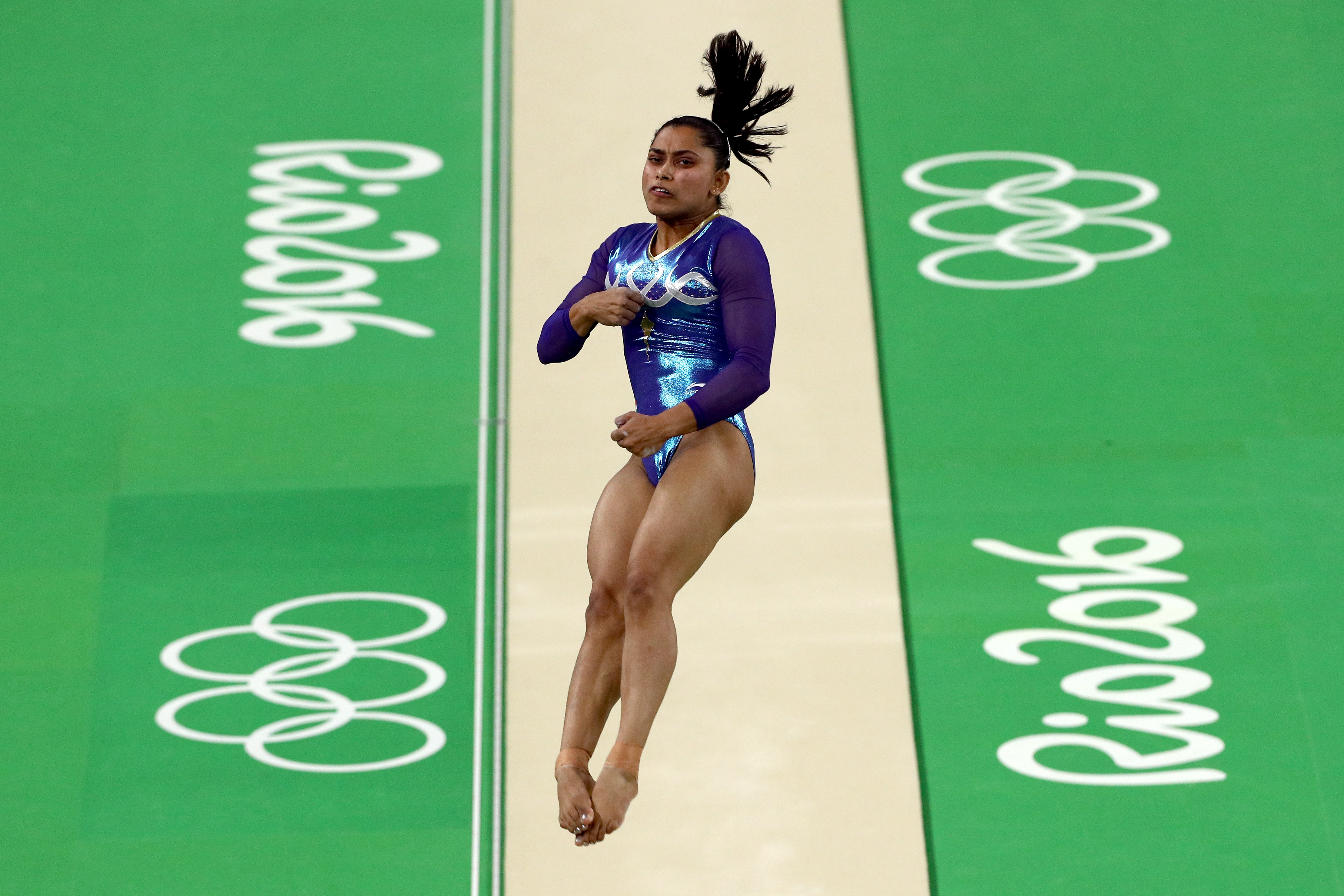Dipa Karmakar | On Independence day India wakes up to a sport named gymnastics

© Gettyimages
Dipa Karmakar might not have won a medal, but just like Milkha Singh and PT Usha, she will also be remembered as one of India’s greatest Olympians not to have won a medal – at least till the 2020 Tokyo Olympics when she has a shot at changing that.
In 1947, a country which has been suffering under British colonialism for almost 200 years, took its first breath as an independent nation in the hour of midnight between August 14 and 15. People all around the country gathered around radio sets to listen to something which many among them did not even understand. 69 years later, something similar thing happened for all Indians. A nation of more than one billion people remained glued to their Television sets in the midnight hour to watch something they did not understand. A tryst with destiny in the greatest sporting event in the World - Dipa Karmakar attempting the ‘Vault of Death’.
An Indian in the final of a gymnastic event in the Olympics was unthinkable a few years back. After all, it was in the 2010 Delhi Commonwealth Games that India won its first-ever international medal in gymnastics. Ashish Kumar’s medals in the Commonwealth Games – a bronze in the floor exercise and a silver in the vault – changed India’s stature in gymnastics, and four years later, Dipa Karmakar took the baton forward with a bronze in the women's vault at the Glasgow Commonwealth Games.

 © Gettyimages
© GettyimagesAlso, read: Dipa Karmakar | The girl who climbed many a mountain to reach the sky
A fifth-place finish at the World Championships came and went, but
After five gymnasts, Dipa Karmakar entered the arena as the sixth in the line of eight finalists, needing a better score than 15.216 to get a medal. Before the final,
The Produnova – the deadliest of gymnastic vaults – was coming. 41-year-old Oksana Chusovitina of Uzbekistan had shown her Produnova skills earlier in the final, but Dipa Karmakar took it to another level. A stumble during landing in the qualifying round had reduced her points in the qualifying round, and
She ran in,

 © Facebook - Go Sports Foundation
© Facebook - Go Sports FoundationBut, with 2015 World Gymnastic championship vault gold medalist Maria Paseka of Russia and the USA’s Simone Biles, who is arguably the greatest gymnast of our times, remaining, a medal was a long shot. After 5 minutes, it was all over. Paseka finished with 15.253 to take the silver, while Biles touched almost 16 to win the gold by a big margin. 0.15 points more, and Dipa could have won a medal. 15.066 would have given
However, this is not an ode to how India lost another medal at Rio. Dipa Karmakar is not going anywhere. At 23, she could have her best years in front of her. Although, gymnastics is a sport where athletes start really young - six of the 8 finalists in
“One wrong move and I could die on the spot” - This is the opening line of Dipa Karmakar in a BBC news package. Produnova, also known as the “Vault of Death”, was first attempted by Russian gymnast Yelena Produnova in 1999. With a difficulty score of 7, Produnova is a vault routine, which gives high value for the difficulty. Even if the gymnast does not manage to land it perfectly, the reward for the routine is very high. It gives the gymnasts attempting Produnova an upper hand over other competitors. Apart from Yelena Produnova, only four other gymnasts have successfully done the routine, and it is known to be the most dangerous of the gymnastic vaults. So much so that, when asked whether she would attempt it, Simone Biles said, "I'm not trying to die."

 © Gettyimages
© GettyimagesIt is true
For a country which has no history in gymnastics, the Vault of Death is a necessity, more than a choice. It is the only thing that gives
Also, read: Twitter reacts to Dipa Karmakar's historic fourth-place finish
